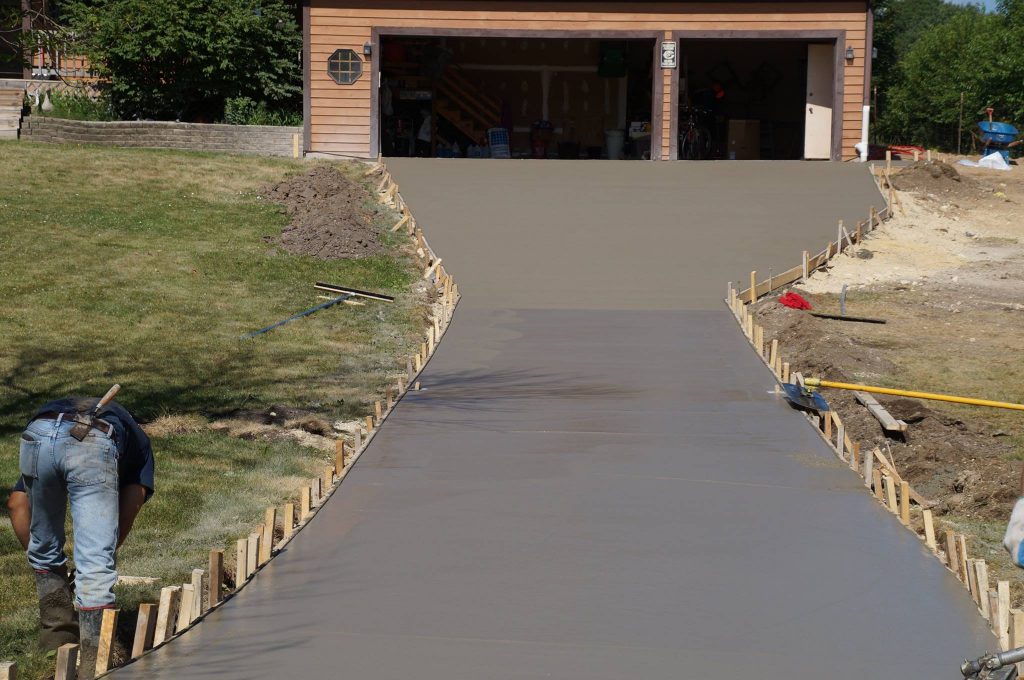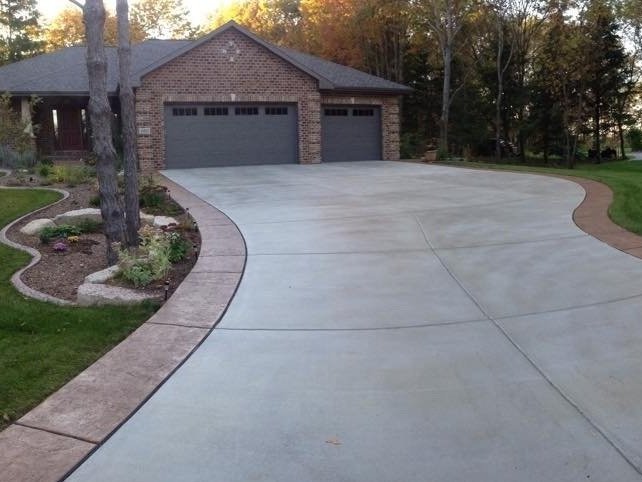Premier Concrete Company Brooksville: Trusted Services You Can Depend On
Premier Concrete Company Brooksville: Trusted Services You Can Depend On
Blog Article
Achieve Structural Quality: Exploring the Perks and Diverse Kind Of Concrete Pieces for Your Residential Or Commercial Property

Advantages of Concrete Slabs
Concrete slabs supply a wide range of advantages for residential property proprietors looking for resilience and durability in their building projects. One of the essential advantages of utilizing concrete pieces is their exceptional strength and resistance to heavy loads, making them excellent for supporting frameworks like driveways, structures, and outdoor patios. Additionally, concrete slabs need minimal upkeep contrasted to various other building and construction materials, saving residential or commercial property owners both money and time over time.
Another advantage of concrete pieces is their adaptability in style and personalization (concrete pole barn foundation contractors in brooksville fl). Property proprietors can pick from various finishes, shades, and patterns to attain the preferred visual for their job. This versatility permits smooth assimilation with different building designs, enhancing the overall appeal of the building
Furthermore, concrete slabs are known for their thermal efficiency, helping to lower and regulate interior temperatures energy consumption. This can result in expense financial savings on cooling and heating costs for property proprietors. Generally, the benefits of concrete pieces make them a functional and trusted option for building tasks that require longevity, toughness, and durability.
Usual Kinds of Concrete Pieces
Amongst the numerous building and construction materials available, different types of concrete slabs provide unique qualities and applications based upon their style and structure. One typical type is the traditional concrete piece, which is a economical and simple alternative ideal for many household and business jobs. An additional prominent option is the post-tensioned concrete slab, known for its boosted stamina and ability to extend longer distances without requiring added assistance. For projects where insulation is a priority, insulated concrete pieces give power efficiency by reducing warmth loss and reducing thermal connecting. Ribbed or waffle slabs are favored for their lightweight nature and high load-bearing capability, making them perfect for larger structures such as parking lot or commercial buildings. Furthermore, flat plate slabs offer a straightforward and functional solution for structures with restricted floor-to-floor elevations. By recognizing the characteristics of these common concrete piece types, homeowner and contractors can make informed choices to satisfy their specific building and construction demands.
Reinforcement Options for Concrete Pieces
When thinking about the construction of concrete slabs, recognizing the numerous support options offered is vital for ensuring architectural integrity and durability. Reinforcement in concrete pieces assists disperse loads, avoid fracturing, and improve toughness.
Fiber reinforcement has additionally gotten appeal in recent times. Fibers such as steel, glass, or artificial products are included in the website here concrete mix to improve its durability and reduce the threat of cracking. Fiber reinforcement is specifically useful in controlling plastic contraction enhancing and splitting effect resistance in concrete pieces.
Eventually, the choice of support option for concrete slabs depends on aspects such as load requirements, ecological problems, and budget plan restraints. Consulting with a structural designer can help figure out one of the most appropriate support technique for a specific task, guaranteeing a durable and lasting concrete piece.
Elements Affecting Concrete Slab Choice
A number of variables play a crucial duty in identifying one of the most ideal concrete slab for a construction task. The very first variable to take into consideration is the designated usage of the structure. Durable commercial centers might require thicker and a lot more strengthened pieces compared to property buildings or commercial spaces. The soil conditions of the building and construction website also play a significant duty in choosing the proper sort of concrete slab. Sites with poor soil high quality may require special considerations such as deeper foundations or the use of post-tensioned slabs to avoid clearing up and cracking. Furthermore, the anticipated loads on the piece, whether dynamic or fixed, require to be assessed to ensure that the chosen slab can endure the anticipated pressures gradually. Environment and ecological variables, such as freeze-thaw cycles or direct exposure to chemicals, will also impact the option of the concrete mix design and surface treatments to improve sturdiness and durability. By very carefully evaluating these crucial aspects, the most suitable concrete slab can be picked to fulfill the details demands of the project.
Upkeep and Longevity of Concrete Slabs

One key maintenance practice is sealing the concrete surface area to protect it from wetness penetration, chemical direct exposure, and discolorations. This site safety barrier can substantially boost the durability of the slab, especially in high-traffic locations or outdoor rooms. In addition, cleaning the concrete on a regular basis to remove dirt, debris, and potential destructive materials can protect against degeneration and preserve its look.
Additionally, staying clear of hefty impact or excessive loads on the concrete pieces can stop architectural damage and extend their life expectancy. Appropriately supporting heavy equipment or lorries on the slabs and avoiding abrasive materials throughout cleansing can also add to their longevity. By complying with these upkeep standards, property owners can guarantee their concrete pieces continue to be strong, resilient, and visually pleasing for many years to find.
Verdict

In the world of home construction and maintenance, the selection of concrete pieces plays a crucial duty in achieving architectural integrity and longevity.Concrete pieces provide a plethora of benefits for building owners seeking resilience and durability in their building projects. By comprehending the characteristics of these typical concrete piece types, residential or commercial property proprietors and builders can make enlightened decisions to meet their particular building needs.
Additionally, the expected tons on the slab, whether dynamic or static, require to be evaluated to ensure that the picked piece can endure the expected stress over time. By understanding the typical types of concrete pieces, support options, and aspects affecting choice, residential property proprietors can achieve architectural excellence.
Report this page